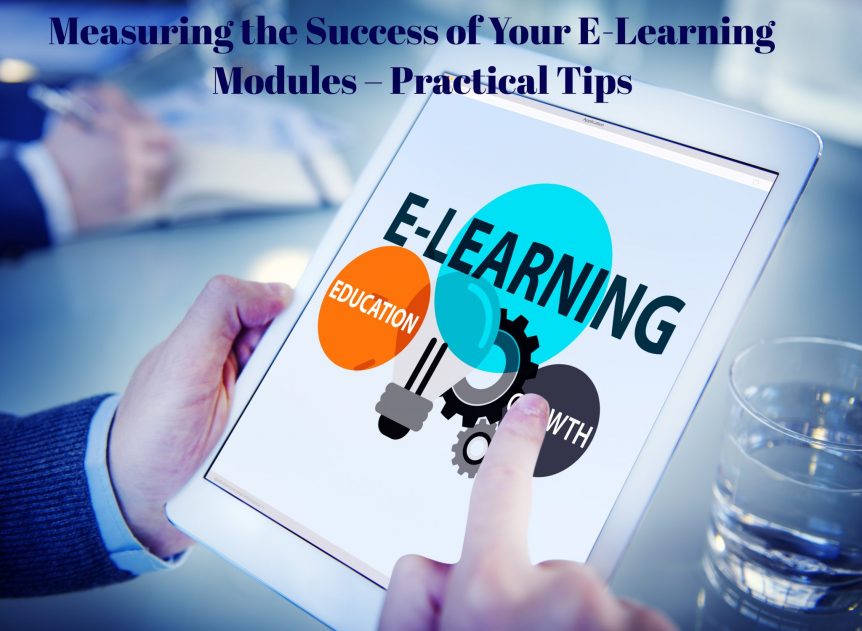Measuring the Success of Your E-Learning Modules – Practical Tips
In a previous blog, we explored the three essential areas to assess when measuring the success of your e-learning modules. As a quick recap, those essential areas were:
- Performance
- Engagement
- Content, design, and delivery
In this blog, we’ll go into deeper detail with practical tips on how you can measure the success of your e-learning modules.
Measuring Performance
This area is about measuring whether the e-learning module delivered on your objectives for the e-learning course. The ways you can measure performance include:
- In-module assessments – this includes quizzes, scenarios, and other assessment features your module may include. Did learners who completed the course get an acceptable score? What percentage of learners achieved a level you deem as being very good or excellent? Did many learners have to repeat the assessments multiple times until they achieved the pre-determined pass mark?
- Post-completion assessments – the information and skills learned in an e-learning course are freshest in the learner’s memory as soon as they finish going through the content. What about several weeks or months later, though? Have they forgotten what they were taught, or have they retained the information?
- Learner self-evaluations – this involves getting the learner to assess their own level of competency. After completing the course, do they now feel comfortable with the information or skill or do they think they need further help, training, or clarification?
- Manager assessments of competency – you should consider speaking to managers as well to find out if they recognise behavioural change in those who completed the e-learning course. After all, a learner could score well on assessments, give themselves an excellent self-evaluation, but then fail to implement the learnings on the job.
- Business improvements – when available, assessing hard figures is important too. Examples include increased sales, reduced costs, enhanced productivity, reduced accident rates, improvements in customer service standards, reduced complaints, etc.
- Reduced training costs – in many situations, comparing the cost of delivering training using e-learning with other methods of training delivery is also important.
Measuring Engagement
The success of an e-learning module is not just about the performance indicators outlined above. Engagement with the learner is crucial too, as engagement demonstrates important qualities in learners such as self-motivation, enthusiasm, and a keenness to develop further.
The ways you can measure the engagement of your e-learning course include:
- Learner satisfaction – use surveys and feedback forms to ask learners their opinions on the course. Did they like it or not? What did they like and what didn’t they like? Would they recommend the course to others?
- Social shares and engagement with social elements – analysing any social signals you have in your course is another way of assessing its success. For example, if your course has a leader board, do learners engage with it and do they discuss it on social media. Or, are they ignoring it?
- Speed of completion – your LMS will give you a range of statistics about your course and how learners interact with it. Speed of completion is one metric you should consider. Are learners taking longer than you thought to complete the course, for example?
- Average session duration – the average session duration may also help. Are learners interacting with the course for short periods of time, for example, because they don’t find it engaging?
- Manager feedback – as managers are closer to their teams, they might have insights that learners may be reluctant to share with you directly.
Measuring Content, Design, & Delivery
This area of measurement primarily involves identifying the parts of your course that work and those that could be improved. The data and information sources you should look at include:
- Completion rates – do you have a high non-completion rate. This could indicate significant issues with the functionality of the course or the complexity of the content.
- Drop-off points – are there parts of the course that experience high drop-off rates? Does this indicate a particularly difficult part of the course that you could look at changing? Maybe you could present the information in a different way?
- Assessment and quiz answers – are there particular questions in quizzes that a high proportion of learners are getting wrong? Is this a problem with the question or the content?
- User type information – is one particular group of learners getting better results than another? Learners with different job roles, for example, or learners in different geographical locations.
- Devices used – assessing the devices learners use can also be helpful. For example, you might believe that learners will primarily use their mobile phone to complete the course. As a result, you design the course with a mobile-first approach. However, the stats inform you that most learners complete the course on a computer. Does the mobile-first design negatively affect the majority of learners who are using a computer?
- Split testing analysis – split testing is a useful tool in e-learning course development, particularly if your course is completed by a large group of people. Examples include onboarding e-learning courses and foundation skills e-learning courses. With these types of course, continually improving the quality of the course will make it more successful. Split testing involves testing different elements of the course to see which works best. For example, one group might get an infographic to explain a concept and another will get an animation. Which gets the best result?
Review, Refine, and Improve
You should constantly seek to improve the e-learning modules you create. The above tips for measuring success in all three essential areas provides you with a template for this process.
